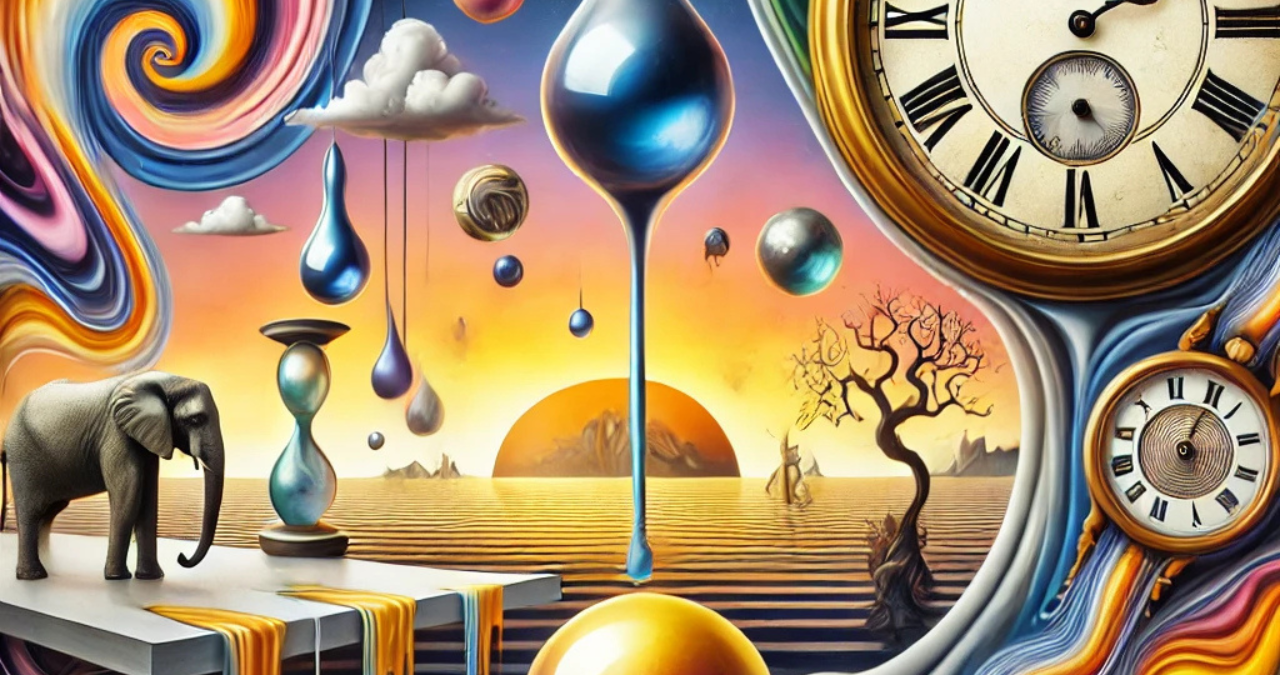Salvador Dalí Paintings: Understanding the Genius of Surrealism, one of the most celebrated and controversial artists of the 20th century, transformed the world of art with his surrealist masterpieces. His works are characterized by bizarre, dreamlike imagery and an extraordinary level of detail, challenging conventional ideas and inviting viewers into his eccentric world.
This article dives deep into Salvador Dalí Paintings: Understanding the Genius of Surrealism unraveling the genius behind his surrealist art and its enduring influence. From his iconic masterpieces to the symbolism within his work, let’s explore the fascinating universe of Salvador Dalí.
Who Was Salvador Dalí Paintings: Understanding the Genius of Surrealism?
Salvador Dalí (1904-1989) was a Spanish artist known for his surrealist works that pushed the boundaries of imagination and creativity. Born in Figueres, Catalonia, he exhibited extraordinary artistic talent from a young age. Dalí’s eccentric personality, coupled with his groundbreaking art, earned him both acclaim and notoriety.
Surrealism, a movement Dalí famously championed, sought to bridge the gap between dreams and reality. His paintings often depicted dreamlike scenarios, subconscious thoughts, and symbolic elements that reflected his personal experiences and the broader human condition.
Key Characteristics of Salvador Dalí Paintings
- Surrealist Imagery
Dalí’s paintings are marked by strange, dreamlike visuals that blend reality and fantasy. Objects are often distorted or presented in unexpected ways, challenging the viewer’s perception.
- Precision and Detail
Despite the bizarre subjects, Dalí’s technique was rooted in classical painting. He meticulously rendered his works with an almost photographic precision, adding to their unsettling beauty.
- Symbolism
Dalí frequently used recurring symbols in his paintings:
- Melting Clocks: Represent the fluidity of time and its irrelevance in dreams.
- Ants: Symbolize decay and impermanence.
- Eggs: Represent life, rebirth, and transformation.
- Elephants with Long Legs: Depict fragility and surreal distortion.
- Themes of Psychoanalysis
Dalí’s works often draw on Freudian concepts, exploring dreams, subconscious desires, and sexual themes.
Iconic Salvador Dalí Paintings
- The Persistence of Memory (1931)
Arguably Dalí’s most famous painting, this surreal masterpiece features melting clocks draped over a barren landscape. The painting symbolizes the fluidity and relativity of time, challenging conventional perceptions of temporality.
- The Elephants (1948)
This painting showcases elephants with impossibly long, spindly legs carrying heavy obelisks. It represents strength juxtaposed with fragility and plays with the concept of weightlessness.
- The Burning Giraffe (1937)
A striking representation of war and human vulnerability, this painting features skeletal structures, open drawers symbolizing hidden desires, and a burning giraffe in the background.
- Swans Reflecting Elephants (1937)
Dalí’s exploration of duality and reflection is evident in this painting, where swans and their reflections transform into elephants. It’s a stunning example of his double-image technique.
- Galatea of the Spheres (1952)
Dedicated to his muse and wife, Gala, this painting dissects her face into a series of spheres, demonstrating Dalí’s fascination with science and molecular structure.
salvador dali paintings Influence on Art and Culture
Dalí’s impact extends far beyond the canvas. His surrealist vision influenced fashion, film, and advertising. He collaborated with filmmakers like Luis Buñuel and Alfred Hitchcock, blending surrealism into cinema. Dalí’s eccentric persona, combined with his art, made him a cultural icon, inspiring generations of artists.
Understanding Dalí’s Symbolism
To truly appreciate Salvador Dalí paintings, understanding his symbolic language is essential. Here’s a breakdown of some of his recurring motifs:
- Clocks: Symbolize the fluidity and irrelevance of time in the dream world.
- Crutches: Represent support and the fragility of human existence.
- Drawers: Inspired by Freud’s psychoanalysis, they symbolize hidden desires or secrets.
- Insects: Often used to symbolize decay, transformation, or fleeting life.
- The Sea: A recurring backdrop symbolizing infinity, mystery, and subconscious thoughts.
Tips for Appreciating Dalí Paintings
- Focus on Details: Examine the minute details and textures in his works to uncover hidden meanings.
- Understand the Context: Learn about Dalí’s life and the historical context of his paintings for deeper appreciation.
- Explore the Symbolism: Familiarize yourself with the recurring symbols in his art to interpret the stories he tells.
- Visit Dalí Museums: Experiencing his works in person, such as at the Dalí Theatre-Museum in Figueres, offers a unique perspective.
Fun Facts About salvador dali paintings
- Dalí designed the logo for Chupa Chups lollipops, which remains in use today.
- He collaborated with Walt Disney on a short animated film, Destino.
- Dalí’s iconic mustache was inspired by Spanish painter Diego Velázquez.
- He once appeared at an exhibition wearing a diving suit to symbolize his “diving” into the subconscious.
- His wife, Gala, was not just his muse but also his business manager and a significant influence on his work.
The Legacy of Salvador Dalí Paintings: Understanding the Genius of Surrealism
Salvador Dalí’s genius lies in his ability to merge technical mastery with unbridled imagination. His paintings continue to captivate audiences worldwide, inviting them to explore the depths of their subconscious. Dalí’s art reminds us that creativity knows no bounds and that dreams can indeed become a canvas for reality.
FAQs About Salvador Dalí Paintings
- What are Salvador Dalí’s most famous paintings?
Some of his most iconic works include The Persistence of Memory, The Elephants, The Burning Giraffe, and Swans Reflecting Elephants. Each of these paintings showcases his surrealist vision and mastery of symbolic imagery.
- What does the melting clock symbolize in Dalí’s paintings?
The melting clocks, most famously seen in The Persistence of Memory, symbolize the fluidity of time and its irrelevance in the dream world.
- How did salvador dali paintings influence the surrealist movement?
Dalí’s innovative use of dreamlike imagery, meticulous detail, and symbolic storytelling solidified his place as a leading figure in the surrealist movement, influencing countless artists and other creative fields.
- Where can I see Salvador Dalí paintings?
Dalí’s works can be viewed at major museums worldwide, including the Dalí Theatre-Museum in Figueres, the salvador dali paintings Museum in Florida, and prominent art galleries like the Museum of Modern Art (MoMA) in New York.
- What themes are commonly explored in Dalí’s art?
Dalí’s paintings often explore themes of dreams, time, subconscious desires, decay, and duality, reflecting his fascination with Freudian psychoanalysis and surrealism.
You May Also Read: https://bestnewsblog.co.uk




